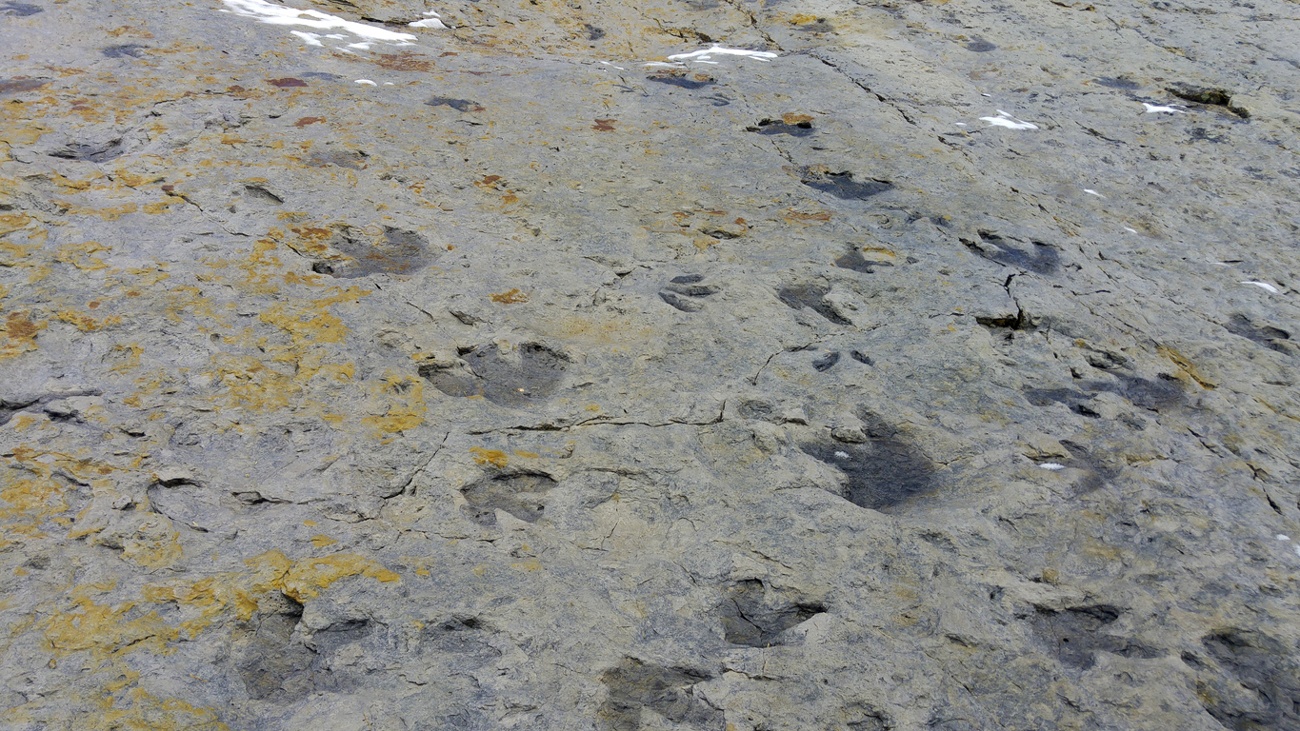
Morrison Fossil Area National Natural Landmark (United States)
The Morrison Fossil Area National Natural Landmark is a unique geologic site located in the Morrison Formation near the town of Morrison and west of Denver, Colorado. It is a world-famous destination for its abundant fossils and dinosaur footprints over 100 million years old. It was the first place where large dinosaur bones were discovered in North America in 1877, representing nine species, seven of which were new. Some of the best known dinosaurs were named from these finds, such as Stegosaurus, Apatosaurus, Diplodocus and Allosaurus. The area was recognized for its uniqueness and historical and scientific importance in 1973, when it was designated as a National Natural Monument by the National Park Service.

Compton Bay (England)
Compton Bay is a beach located on the south coast of the Isle of Wight, England. It is a place famous for its dinosaur footprint remains, which can be seen on a sandstone ledge at Hanover Point at low tide1. These footprints belong to herbivores such as the iguanodon and carnivores such as the neovenator. In addition to the tracks, fossils of bones, teeth and wood can also be found in the gravel and stones on the beach. Compton Bay is part of the Jurassic Coast World Heritage Site, which encompasses just over 150 kilometers of coastline with rocks and fossils up to 185 million years old.
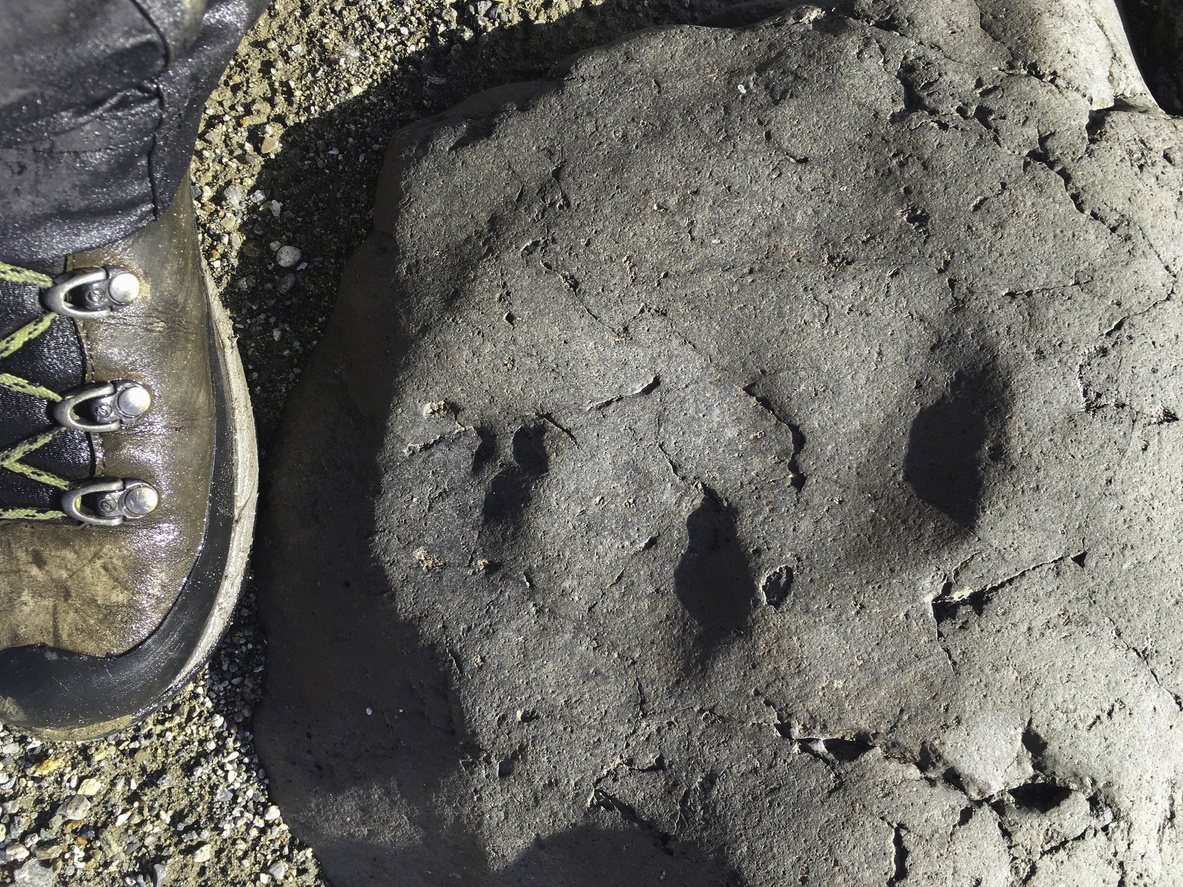
Denali National Park and Preserve (United States)
Denali National Park and Preserve is a protected natural area in the state of Alaska, United States, which is home to the highest peak in North America, Mount Denali. It is also a place where numerous dinosaur footprints from about 70 million years ago have been found. These tracks belong to different types of dinosaurs, such as theropods (bipedal carnivores), hadrosaurs (duck-billed herbivores), ceratopsians (horned herbivores) and pterosaurs (flying reptiles). Tracks have been preserved in the sedimentary rock of the Cantwell Formation and can be seen on mountainsides and riverbeds.
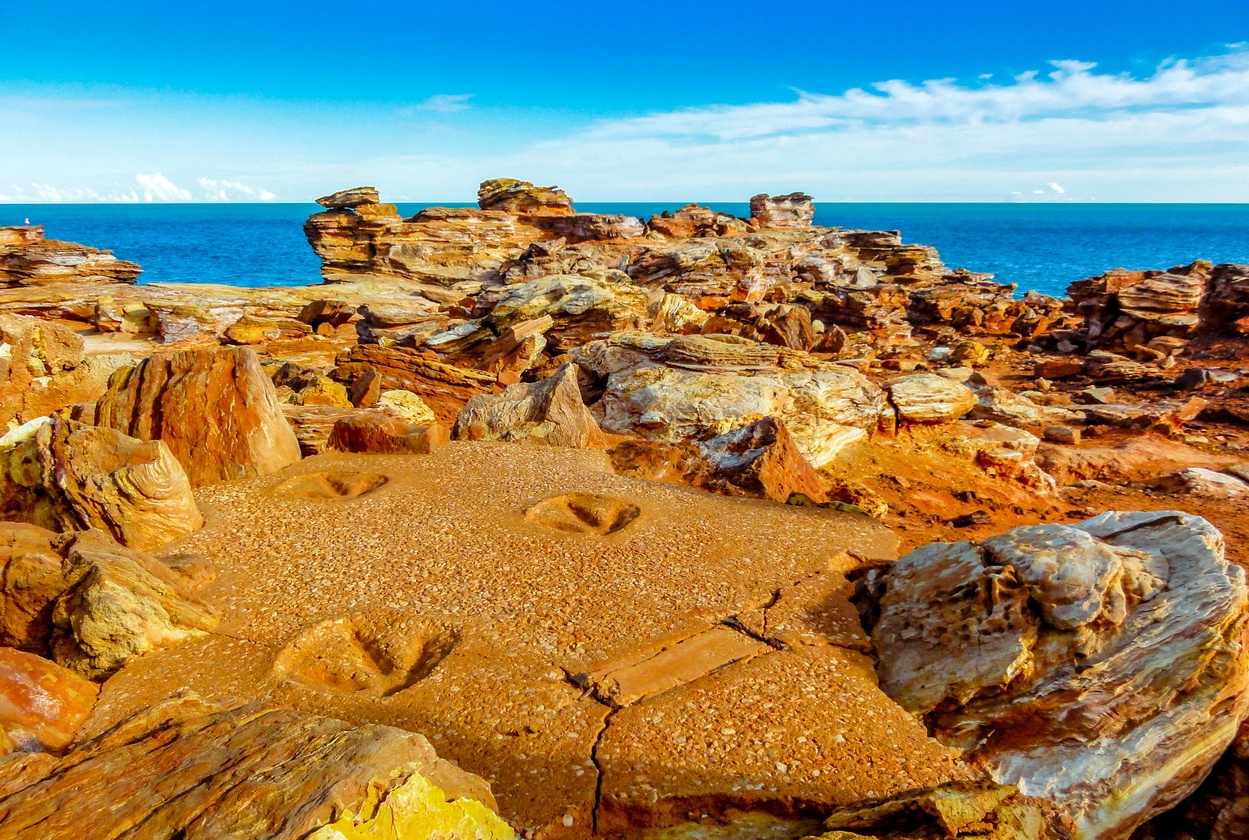
Dampier Peninsula (Australia)
The Dampier Peninsula is a coastal region in northwestern Australia that is home to thousands of dinosaur footprints from over 120 million years ago. These tracks belong to 21 different types of dinosaurs, making it the most diverse area of dinosaur tracks in the world. Among them are the largest footprints ever studied in detail, up to 1.7 meters long. The tracks can be seen in the sandstone rock at low tide, especially at Cable Beach and Gantheaume Point.
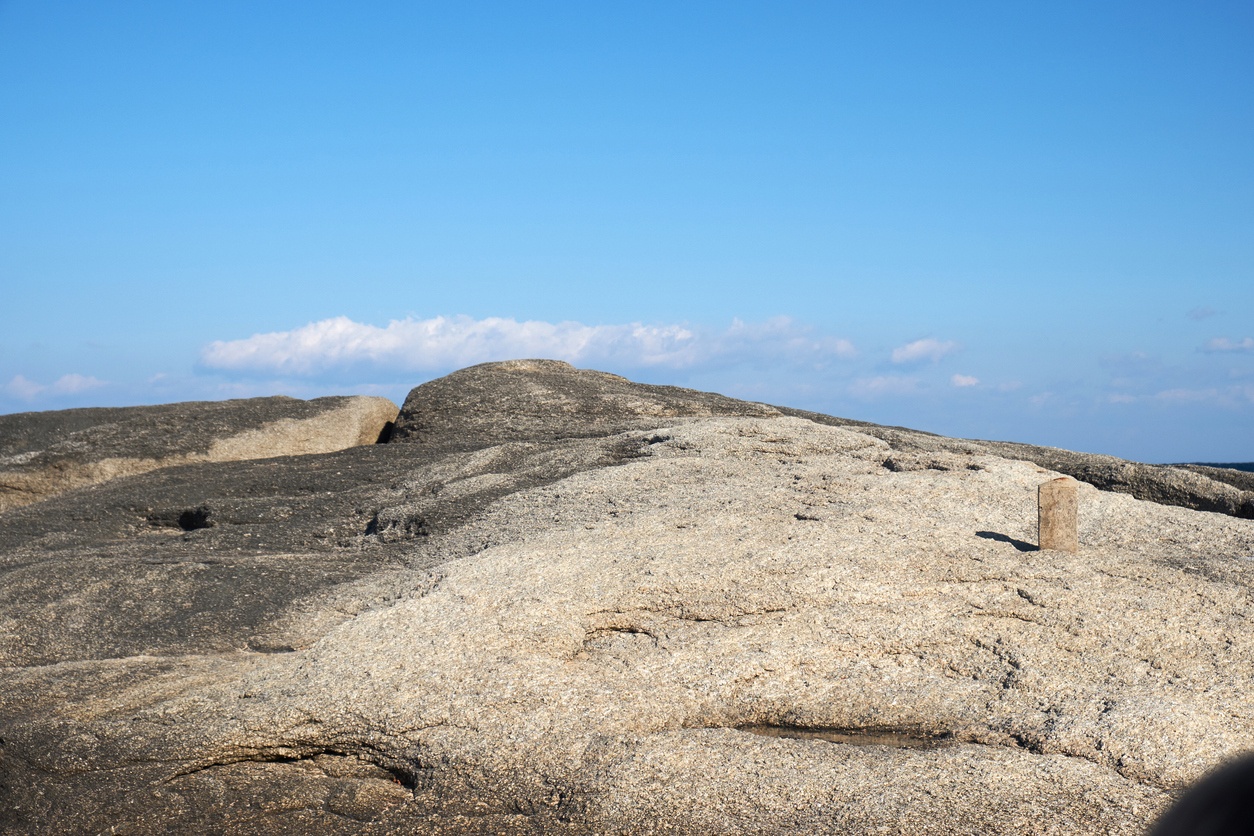
Goseong (South Korea)
Goseong County is a region located in southern South Korea, which is home to thousands of dinosaur footprints from about 100 million years ago. These footprints have been found in the sandstone rock along the coast and belong to different types of dinosaurs, such as brontosaurs, brachiosaurs, allosaurs and other species. The footprints were first discovered in 1982 in the Sangjogam area and were designated Natural Monument No. 411 in 1999. The tracks reveal information about the diversity and behavior of the dinosaurs that inhabited this area during the Cretaceous period.
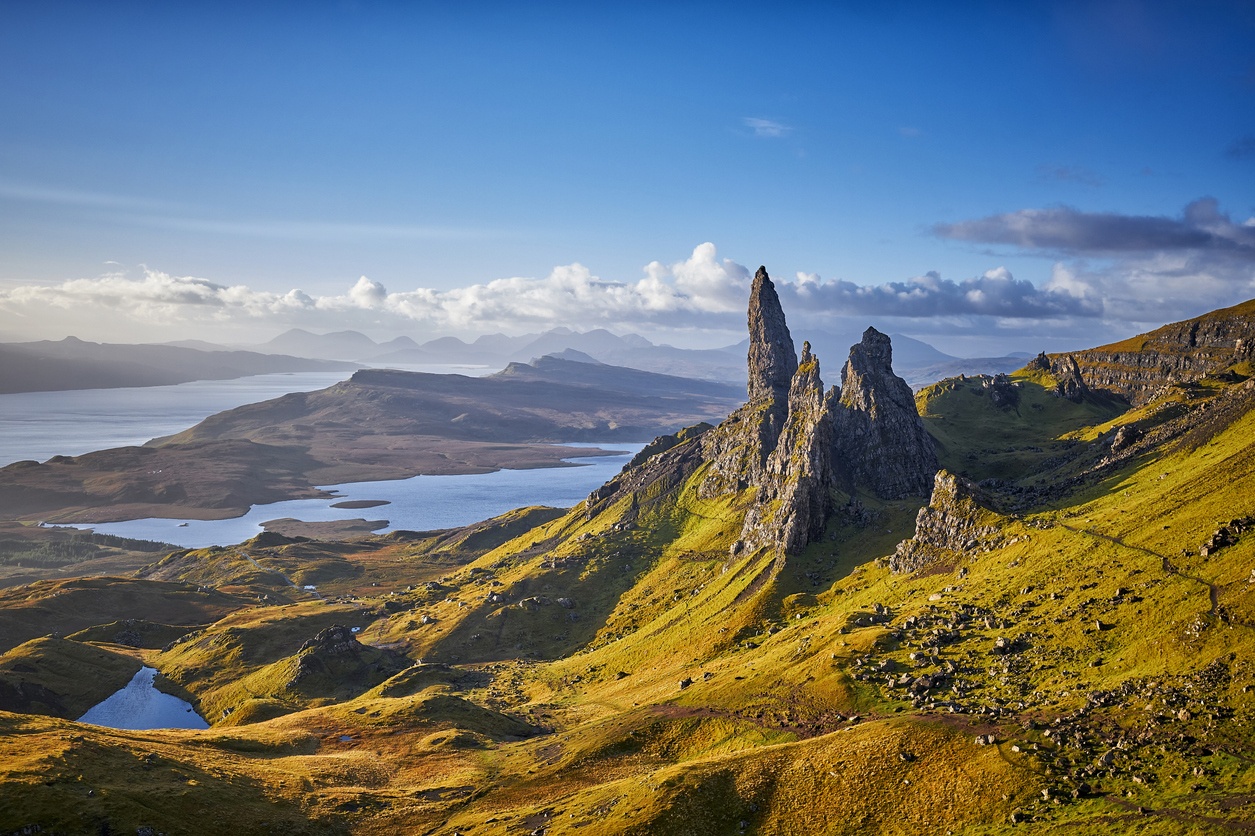
Isle of Skye (Scotland)
The dinosaur footprints on the Isle of Skye belong to two types of dinosaurs: sauropods and theropods, which lived about 170 million years ago. They are the earliest sauropod tracks found in Scotland and the oldest from the Middle Jurassic. They were discovered in a tidal area in the northeast of the island and were analyzed with drones and photogrammetric models.
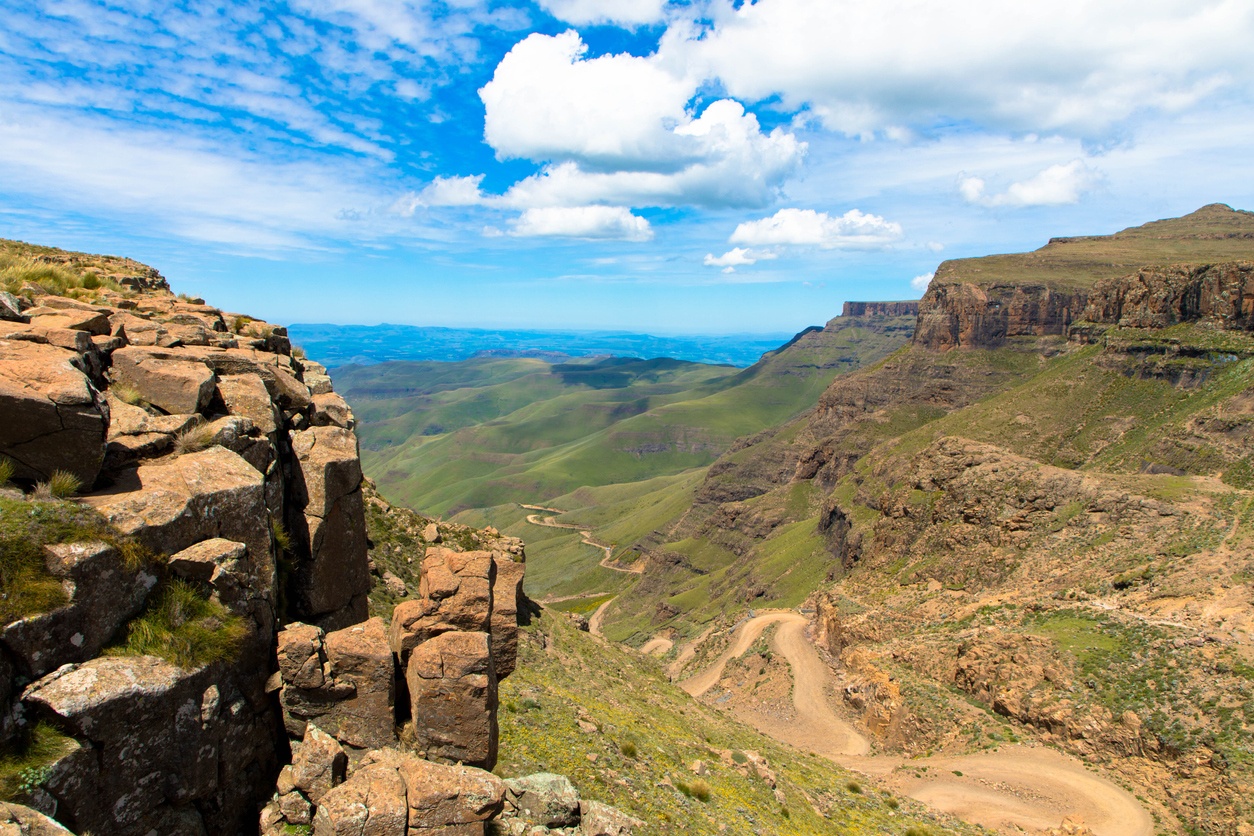
Ts’ehlanyane National Park (Lesotho)
The dinosaur footprints in Ts’ehlanyane National Park are among the few preserved in Africa. They are found in two locations: Morija and Tsikoane, near the Maloti Mountains. The footprints belong to Mesozoic dinosaurs, the era when they dominated the planet. The park is part of the Maloti-Drakensberg transboundary conservation area.
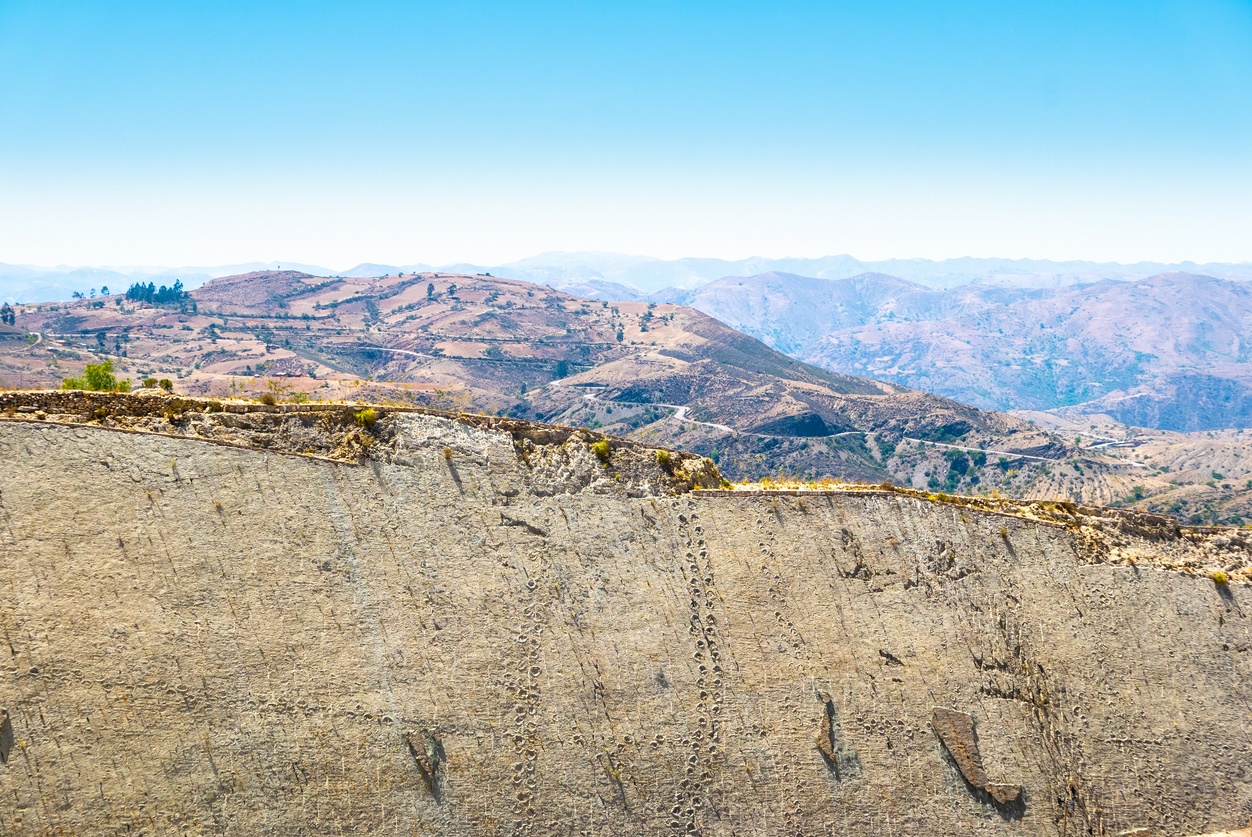
Cretaceous Park (Bolivia)
The Cretaceous Park is near Sucre, Bolivia, and is home to almost 5,000 dinosaur footprints of at least 8 different species. The tracks are preserved in a limestone outcrop dating from the Late Cretaceous, some 68 million years ago. The park also has full-scale dinosaur replicas, a museum, a restaurant and an observation deck. It is considered the world’s largest repository of dinosaur footprints.
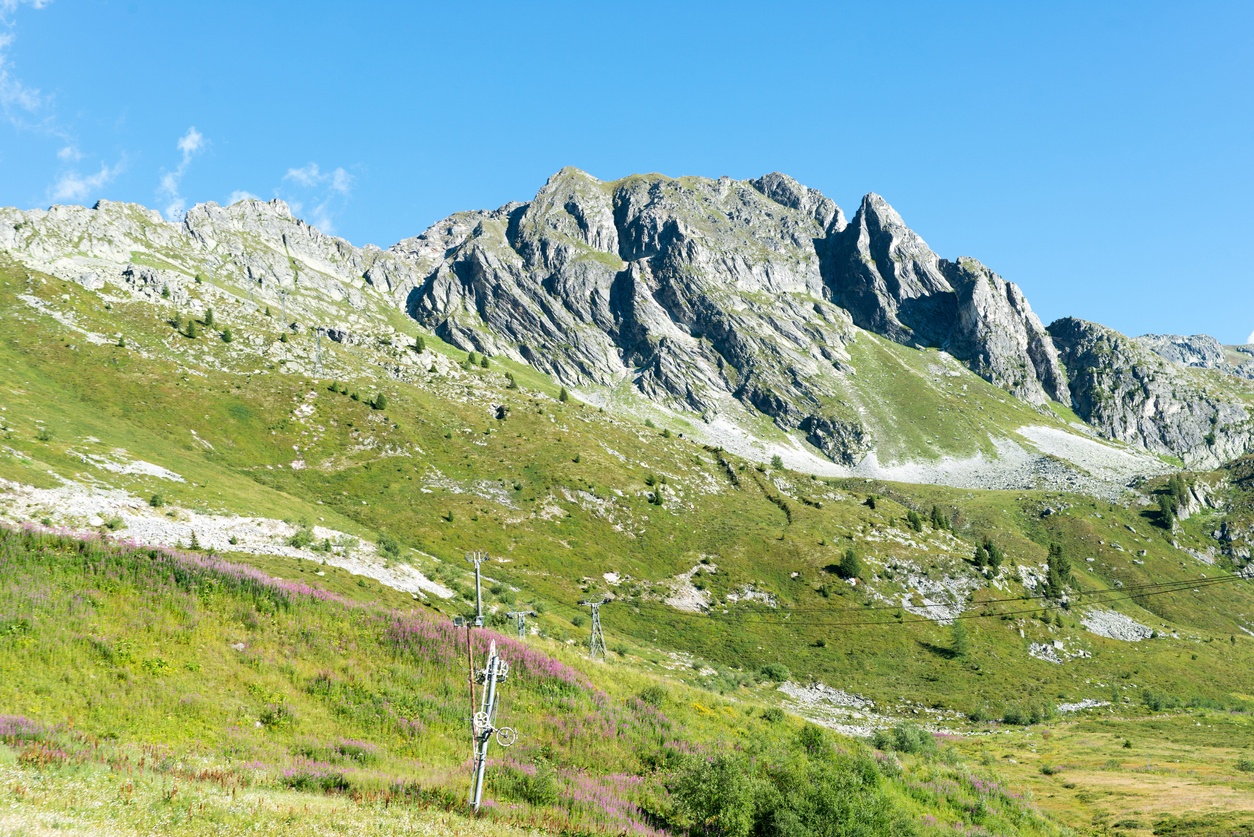
Plagne (Switzerland)
The dinosaur footprints in Plagne, Switzerland, are the largest known so far. They measure between 1.20 and 1.50 meters in diameter and form a path of 110 footprints extending for 155 meters. The footprints belong to a giant sauropod 35 meters long and weighing 35 tons that lived 150 million years ago. They were discovered in 2009 by two amateur naturalists.
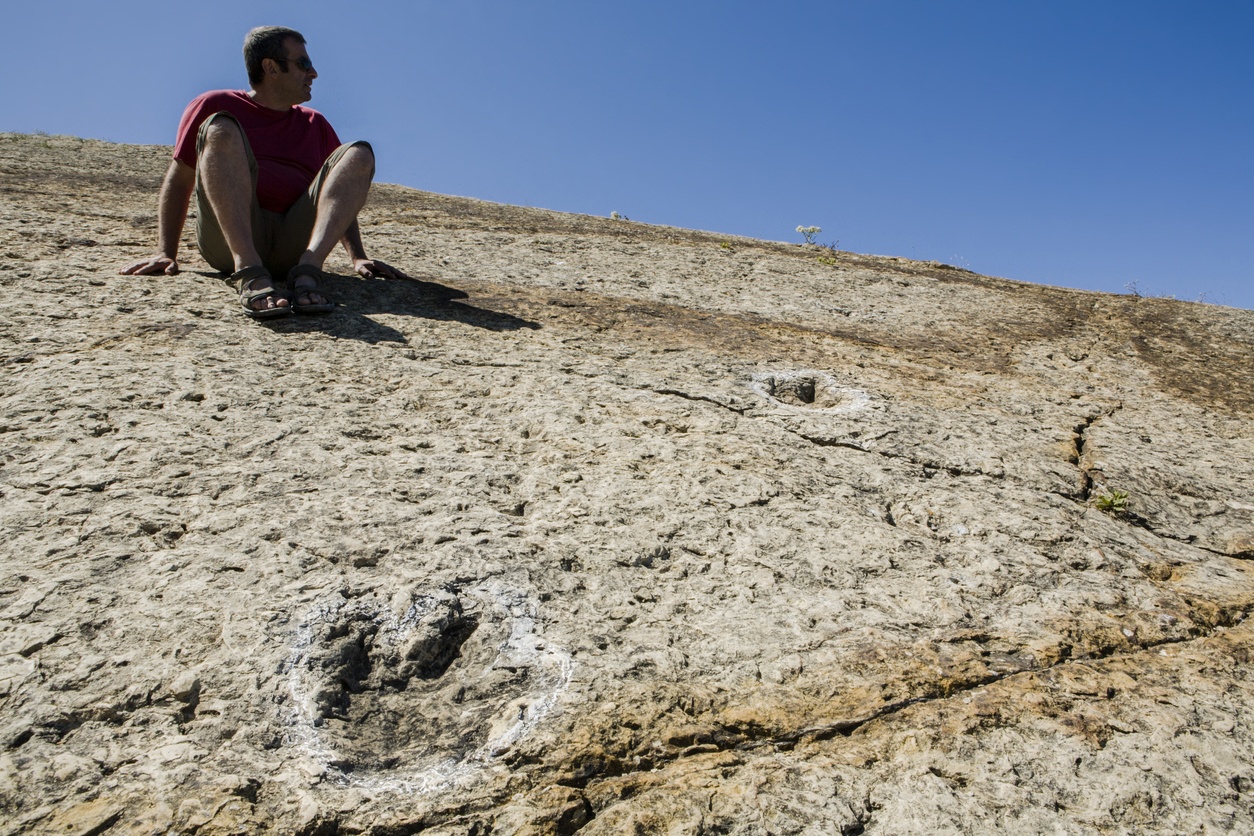
Sesimbra (Portugal)
The dinosaur footprints in Sesimbra are located at Cape Espichel, a place of great natural and historical beauty. The footprints belong to carnivorous (theropods) and herbivorous (sauropods and ornithopods) dinosaurs that lived about 129 million years ago. More than 600 footprints have been discovered in different layers of limestone rock.
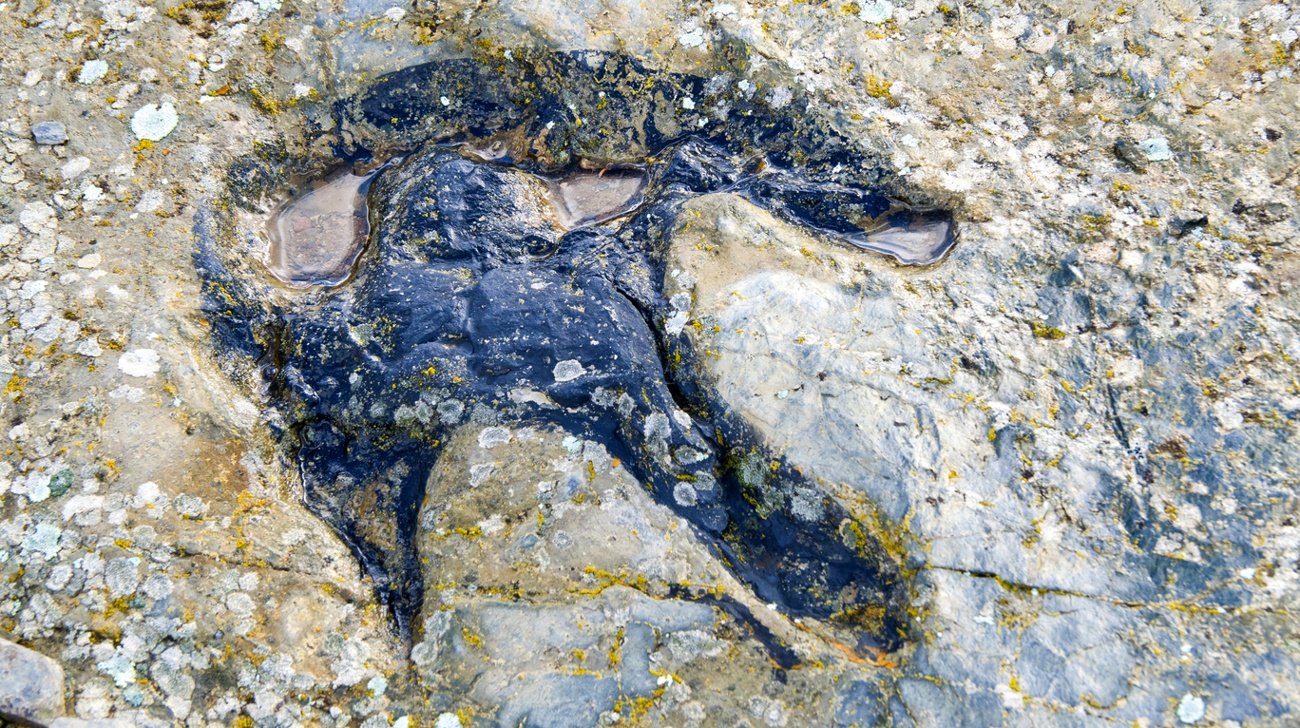
Fuentesalvo Ichnites Site (Spain)
The Fuentesalvo Ichnites Site is located in the port of Oncala, near Villar del Río, in the province of Soria. It is one of the oldest sites in Spain, with dinosaur footprints from the Upper Triassic, about 220 million years ago. The footprints belong to biped and quadruped dinosaurs, some of them with claw marks. The site has information panels and a replica of a dinosaur.
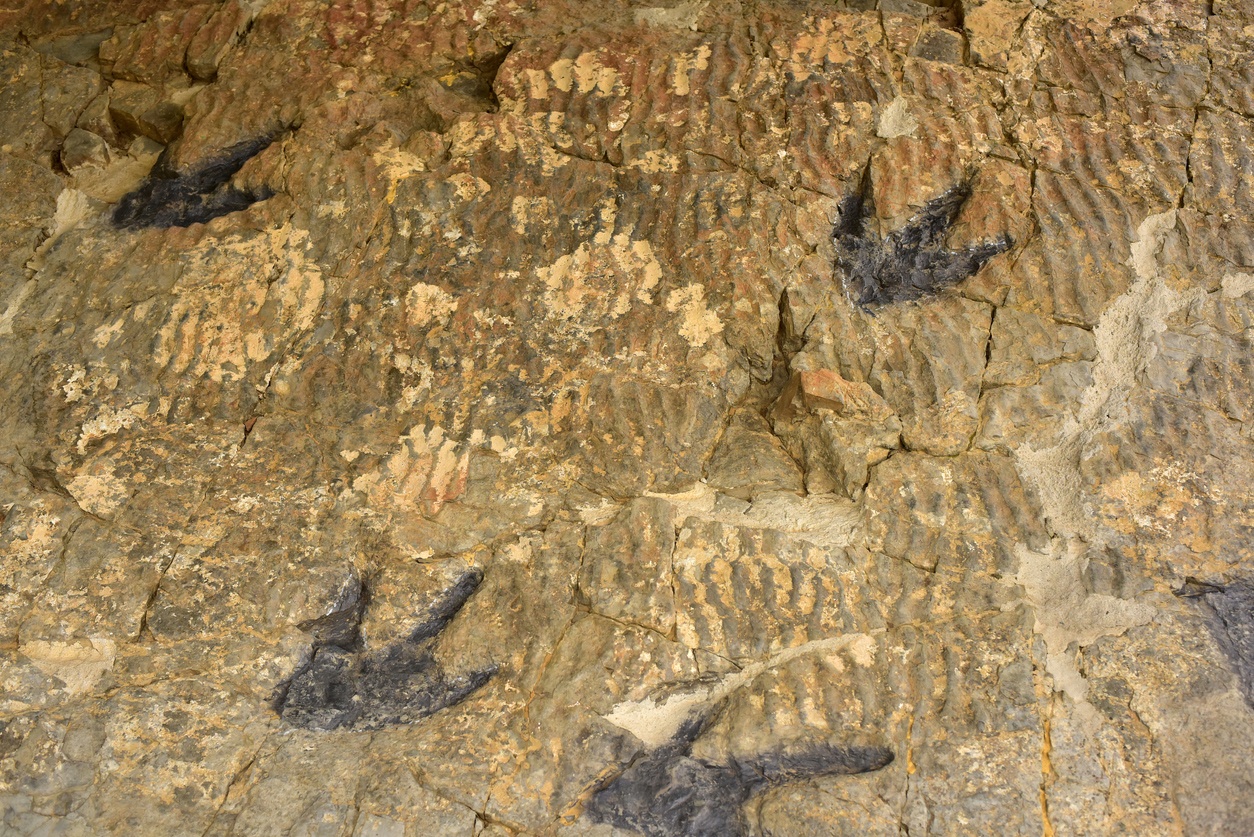
Ichnite deposits of Enciso (Spain)
The Enciso ichnite site is located in La Rioja, south of the Cidacos river valley. It is one of the richest and most varied deposits in Spain, with 1,400 dinosaur footprints of different types and sizes. Several outcrops can be visited along a route that starts at the Enciso Paleontological Center. Some sites have dinosaur replicas and information panels.






